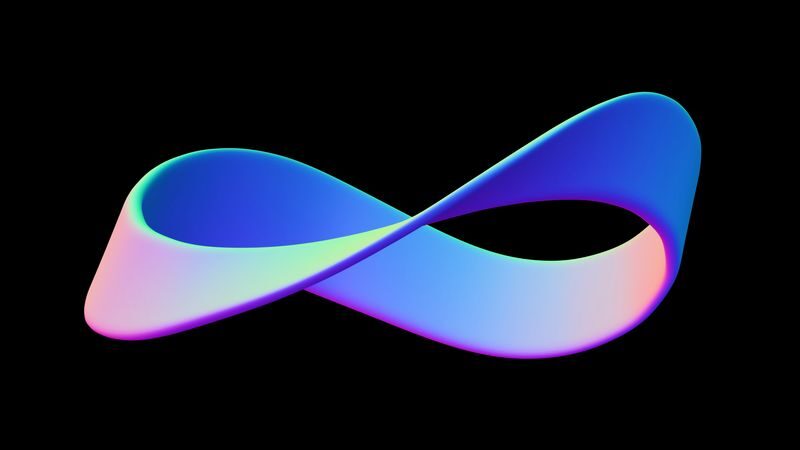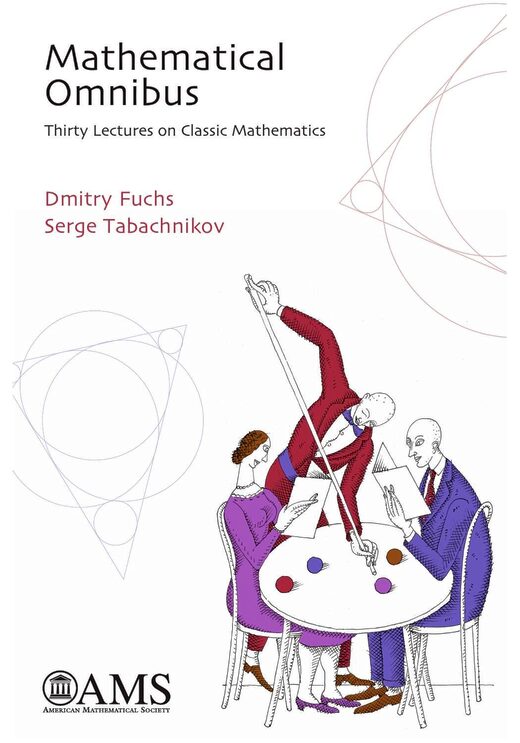The 1858 discovery of Möbius bands is credited to two German mathematicians — August Ferdinand Möbius and Johann Benedict Listing — though evidence suggests that mathematical giant Carl Friedrich Gauss was also aware of the shapes at this time, says Moira Chas, a mathematician at Stony Brook University. Regardless of who first thought about them, until recently, researchers were stumped by one seemingly easy question about Möbius bands: What is the shortest strip of paper needed to make one? Specifically, this problem was unsolved for smooth Möbius strips that are "embedded" instead of "immersed," meaning they "don't interpenetrate themselves," or self-intersect, says Richard Evan Schwartz, a mathematician at Brown University. Imagine that "the Möbius strip was actually a hologram, a kind of ghostly graphical projection into three-dimensional space," Schwartz says. For an immersed Möbius band, "several sheets of the thing could overlap with each other, sort of like a ghost walking through a wall," but for an embedded band, "there are no overlaps like this."
In 1977 mathematicians Charles Sidney Weaver and Benjamin Rigler Halpern posed this question about the minimum size and noted that "their problem becomes easy if you allow the Möbius band you are making to have self-intersections," says Dmitry Fuchs, a mathematician at the University of California, Davis. The remaining question, he adds, "was to determine, informally speaking, how much room you need to avoid self-intersections." Halpern and Weaver proposed a minimum size, but they couldn't prove this idea, called the Halpern-Weaver conjecture.
Schwartz first learned about the problem about four years ago, when Sergei Tabachnikov, a mathematician at Pennsylvania State University, mentioned it to him, and Schwartz read a chapter on the subject in a book Tabachnikov and Fuchs had written. "I read the chapter, and I was hooked," he says. Now his interest has paid off with a solution to the problem at last. In a preprint paper posted on arXiv.org on August 24, Schwartz proved the Halpern-Weaver conjecture. He showed that embedded Möbius strips made out of paper can only be constructed with an aspect ratio greater than √3, which is about 1.73. For instance, if the strip is one centimeter wide, it must be longer than √3 cm.
Solving the quandary required mathematical creativity. When one uses a standard approach to this type of problem, "it is always difficult to distinguish, by means of formulas, between self-intersecting and non-self-intersecting surfaces," Fuchs says. "To overcome this difficulty, you need to have [Schwartz's] geometric vision. But it is so rare!"
In Schwartz's proof, "Rich managed to dissect the problem into manageable pieces, each of which essentially necessitated only basic geometry to be solved," says Max Wardetzky, a mathematician at the University of Göttingen in Germany. "This approach to proofs embodies one of the purest forms of elegance and beauty."
Before arriving at the successful strategy, however, Schwartz tried other tactics on and off again over a few years. He recently decided to revisit the problem because of a nagging sensation that the approach he had used in a 2021 paper should have worked.
In a way, his gut feeling was correct. When he resumed investigating the problem, he noticed a mistake in a "lemma" — an intermediate result — involving a "T-pattern" in his previous paper. By correcting the error, Schwartz quickly and easily proved the Halpern-Weaver conjecture. If not for that mistake, "I would have solved this thing three years ago!" Schwartz says.
In Schwartz's solution to the Halpern-Weaver conjecture, the T-pattern lemma is a critical component. The lemma begins with one basic idea: "Möbius bands, they have these straight lines on them. They're [what are] called 'ruled surfaces,'" he says. (Other paper objects share this property. "Whenever you have paper in space, even if it's in some complicated position, still, at every point, there's a straight line through it," Schwartz notes.) You can imagine drawing these straight lines so that they cut across the Möbius band and hit the boundary at either end.
In his earlier work, Schwartz identified two straight lines that are perpendicular to each other and also in the same plane, forming a T-pattern on every Möbius strip. "It is not at all obvious that these things exist," Schwartz says. Showing that they do was the first part of proving the lemma, however.
The next step was to set up and solve an optimization problem that entailed slicing open a Möbius band at an angle (rather than perpendicular to the boundary) along a line segment that stretched across the width of the band and considering the resulting shape. For this step, in Schwartz's 2021 paper, he incorrectly concluded that this shape was a parallelogram. It's actually a trapezoid.
This summer, Schwartz decided to try a different tactic. He started experimenting with squishing paper Möbius bands flat. He thought, "Maybe if I can show that you can press them into the plane, I can simplify it to an easier problem where you're just thinking of planar objects."
During those experiments, Schwartz cut open a Möbius band and realized, "Oh, my God, it's not the parallelogram. It's a trapezoid." Discovering his mistake, Schwartz was first annoyed ("I hate making mistakes," he says) but then driven to use the new information to rerun other calculations. "The corrected calculation gave me the number that was the conjecture," he says. "I was gobsmacked.... I spent, like, the next three days hardly sleeping, just writing this thing up."
Finally, the 50-year-old question was answered. "It takes courage to try to solve a problem that remained open for a long time," Tabachnikov says. "It is characteristic of Richard Schwartz's approach to mathematics: He likes attacking problems that are relatively easy to state and that are known to be hard. And typically he sees new aspects of these problems that the previous researchers didn't notice."
"I see math as a joint work of humanity," Chas says. "I wish we could tell Möbius, Listing and Gauss, 'You started, and now look at this....' Maybe in some mathematical sky, they are there, looking at us and thinking, 'Oh, gosh!'"
As for related questions, mathematicians already know that there isn't a limit on how long embedded Möbius strips can be (although physically constructing them would become cumbersome at some point). No one, however, knows how short a strip of paper can be if it's going to be used to make a Möbius band with three twists in it instead of one, Schwartz notes. More generally, "one can ask about the optimal sizes of Möbius bands that make an odd number of twists," Tabachnikov says. "I expect someone to solve this more general problem in the near future."
Rachel Crowell is a Midwest-based writer covering science and mathematics. Follow Crowell on Twitter @writesRCrowell Credit: Nick Higgins





......................